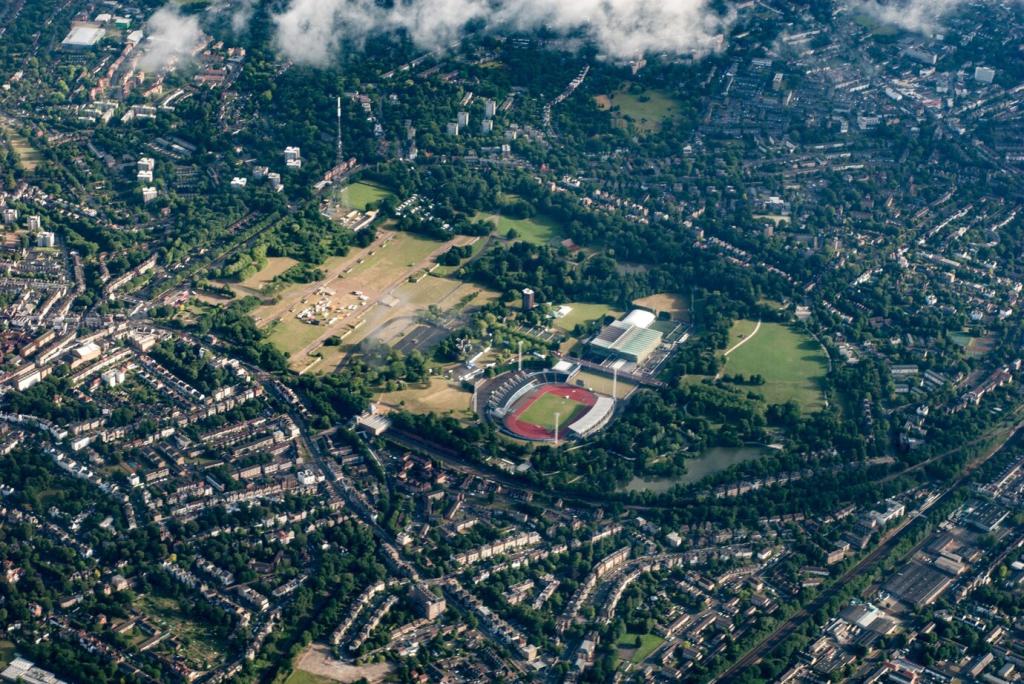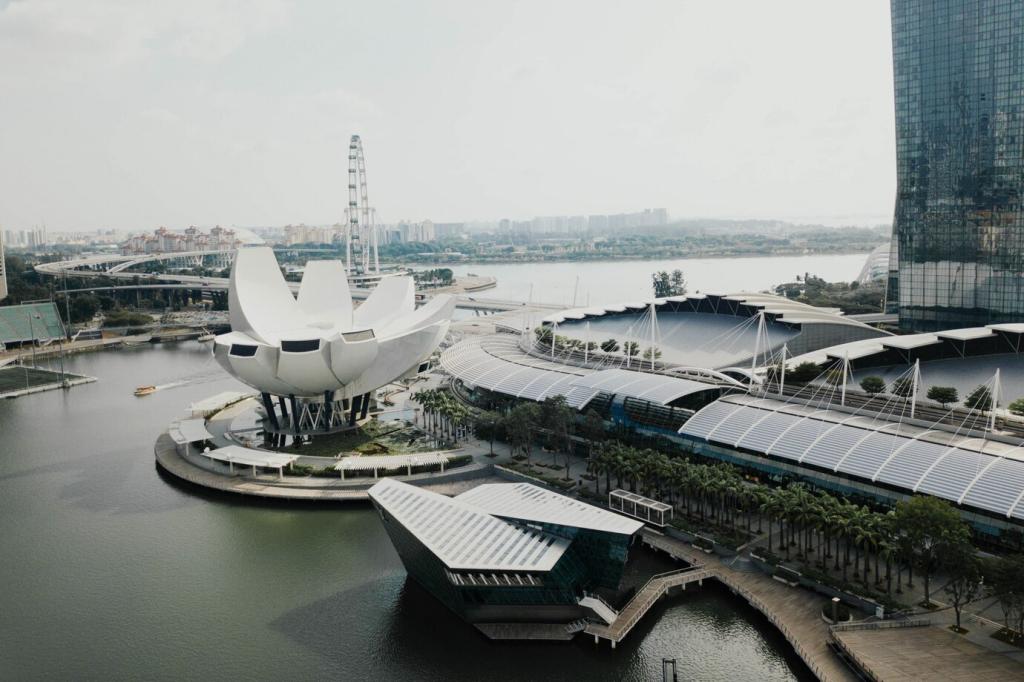
Urban Solar Power Implementation
Urban solar power implementation is transforming the energy landscape in cities worldwide. By harnessing solar energy within urban environments, municipalities, businesses, and residents are finding innovative ways to reduce carbon emissions, decrease electricity costs, and promote environmental sustainability. This shift requires a comprehensive understanding of technological, architectural, financial, and regulatory factors unique to dense cityscapes. The following sections delve into the multifaceted process of bringing solar power to the heart of metropolitan areas, from identifying opportunities and overcoming challenges to reaping social, economic, and environmental benefits.
The Potential of Urban Solar Energy
Rooftop Utilization
Urban rooftops represent one of the largest reservoirs for solar panel installation in city environments. Many commercial and residential buildings have flat or lightly pitched roofs that receive ample sunlight throughout the day. By leveraging these surfaces, cities can significantly increase their renewable energy output without requiring additional land. This approach not only reduces dependence on fossil fuels but also can lead to lower electricity bills for building owners and tenants. Addressing accessibility and structural integrity concerns is essential, but advancements in lightweight panel technology and mounting systems have rendered many rooftops suitable for solar arrays.
Building-Integrated Photovoltaics
Integrating photovoltaic materials directly into a building’s structure is a groundbreaking solution for energy generation. Innovations such as solar glass façades and photovoltaic tiles allow urban buildings to serve dual purposes: serving as functional spaces while also acting as mini power plants. This approach is especially advantageous for new constructions, as solar elements can be incorporated seamlessly during design. Retrofitting existing buildings is also feasible, albeit with greater engineering challenges. As building-integrated photovoltaics become more aesthetically pleasing and efficient, their adoption in urban settings is likely to accelerate, helping cities meet renewable energy targets without altering city skylines dramatically.
Parking Lots and Infrastructure
Urban infrastructure such as parking lots, walkways, and transit shelters offer expansive surfaces for solar installations. Covered parking structures with solar panels not only generate electricity but also provide shaded protection for vehicles, enhancing their value for property owners and users. Likewise, integrating solar canopies over sidewalks or public spaces can both generate clean power and offer functional benefits for city dwellers. These multi-functional applications maximize the utility of already developed spaces, making solar a practical choice even in densely built environments.
Challenges Unique to City Environments
Space and Shading Constraints
One of the primary barriers to urban solar deployment is limited available space paired with tall buildings and close proximity, leading to significant shading issues. Shadows cast by surrounding high-rises can greatly reduce the efficiency of solar arrays. Identifying optimal installation locations necessitates sophisticated solar mapping and simulation. Additionally, there is growing interest in deploying higher-efficiency panels and tracking systems to mitigate the impact of partial shading, ensuring that even small or less-than-ideal surfaces can contribute meaningfully to a city’s solar capacity.
Regulatory and Zoning Complexities
Urban solar projects must navigate a complex web of city regulations, zoning rules, and permitting procedures, which can differ from block to block. Some jurisdictions have historic preservation restrictions, height limitations, or visual guidelines that affect where and how solar panels can be installed. Developers and property owners often need to work closely with local authorities to secure approvals, which requires time, expertise, and persistence. Streamlining these processes and establishing clear guidelines could greatly ease the integration of solar infrastructure in cities and incentivize broader participation.
Aging Infrastructure and Grid Limitations
Many cities operate on electrical grids and building infrastructures that were developed long before distributed generation was considered. This can present difficulties for integrating solar power at scale, especially with the potential for load imbalances and grid congestion. Upgrading electrical systems to accommodate bidirectional electricity flows, deploying smart grid technologies, and reinforcing the physical infrastructure of older buildings are essential steps. Addressing these issues not only supports solar adoption but also improves resiliency and future-proofs urban power networks.
Advances in Solar Technology for Cities
High-Efficiency Solar Panels
The urban environment demands solar panels that deliver maximum output from limited available space. Recent advancements have led to the development of panels with higher conversion efficiencies, allowing for more power generation per square meter. Innovations such as bifacial cells, heterojunction technology, and tandem solar cells are contributing to this upward trend. These high-performance panels enable city installations to realize greater returns, making solar a viable investment for more property owners.
Thin-Film and Flexible Photovoltaics
Traditional rigid panels are not suited for all urban surfaces, particularly those with weight restrictions or unconventional shapes. Thin-film and flexible photovoltaics offer a lightweight, adaptable alternative. They can be applied as solar shingles, integrated into glass for windows and skylights, or even wrapped around curved surfaces. Their versatility expands the range of possible solar installation sites, from historic buildings to modern skyscrapers, ensuring that even challenging locations can participate in the solar revolution.
Smart Systems and Monitoring
Digital technologies are revolutionizing solar management, especially in the complex, distributed energy environment of the modern city. Smart inverters, real-time performance monitoring, and advanced analytics allow for proactive maintenance and optimization. Remote diagnostics can predict and quickly resolve problems, minimizing system downtime. Additionally, integrating solar with building energy management systems enables dynamic energy balancing, helping city buildings optimize consumption, storage, and grid exports for maximal efficiency and cost savings.
Financing and Incentives for Urban Solar Projects
Many city, state, and federal governments offer substantial grants, rebates, and tax incentives to offset the high cost of installing solar power systems. These programs are designed to reduce the financial burden on property owners and developers, making solar investment more attractive and feasible. Some incentives are tailored specifically to urban settings where installation costs may be higher due to structural complexities or regulatory requirements. Staying informed about available programs and changes in policy is essential for maximizing financial returns.
Integration with Urban Infrastructure

Urban architects and planners are increasingly embracing solar-ready design principles for both new construction and renovations. This forward-thinking approach involves orienting buildings for maximum sunlight exposure, designing flat or gently sloped roofs, and ensuring sufficient load-bearing capacity for future installations. Solar-ready codes and guidelines help streamline future projects, reduce installation costs, and make solar a standard feature of modern urban buildings rather than an afterthought or retrofit challenge.

Reducing Carbon Emissions
Transitioning urban energy supply to solar plays a direct role in lowering greenhouse gas emissions. Electricity generation is a significant contributor to urban air pollution and climate change, particularly when powered by fossil fuels. By replacing conventional power sources with clean, renewable solar energy, cities can drastically cut their carbon footprint. Large-scale urban solar adoption is thus essential for achieving municipal sustainability targets and fulfilling commitments under international climate agreements.
Enhancing Public Health
Cleaner air resulting from reduced reliance on coal, oil, and gas leads to measurable public health improvements. Cities that implement solar projects often experience declines in rates of asthma, respiratory diseases, and cardiovascular conditions linked to air pollution. In addition, urban greenery can be combined with solar installations—such as green roofs plus solar panels—to further enhance environmental and health outcomes. Prioritizing solar not only cleans the air but also demonstrates a commitment to citizen well-being.
Community Resilience and Empowerment
Local solar generation enhances energy security and community resilience, particularly in the face of rising electricity demands and potential grid disruptions caused by extreme weather. Decentralized solar installations can provide backup power for critical city services and reduce vulnerabilities during emergencies. Solar also creates educational and job opportunities, fostering economic inclusion and empowering communities to take charge of their energy future. Urban solar power can thus be a tool for strengthening social fabric as well as energy infrastructure.
Future Trends and Innovations
Energy Storage Solutions
As urban solar capacity grows, integrating energy storage systems becomes paramount for maximizing solar’s effectiveness. Batteries and other forms of storage enable solar power generated during the day to be used during peak demand times or at night, smoothing out intermittencies and ensuring reliability. Innovations in grid-scale and behind-the-meter storage are making it ever more feasible to balance urban energy supply and demand, paving the way for solar-plus-storage as the new urban standard.
Solar Sharing and Virtual Power Plants
Technologies enabling peer-to-peer energy trading and the development of virtual power plants are set to transform how urban solar power is distributed and managed. Through advanced software platforms, building owners can share excess solar generation with neighbors or aggregate distributed resources to function as a single, flexible power provider to the grid. These approaches foster greater grid stability, local energy autonomy, and cost-effectiveness, ultimately accelerating the urban transition to clean energy.
Policy and Regulatory Evolution
Forward-thinking policies and adaptive regulatory frameworks drive innovation in urban solar. Cities experimenting with feed-in tariffs, streamlined permitting, and grid modernization are showing how regulatory environments can make or break the success of solar deployment. Progressive urban governments are increasingly adopting mandates for solar installations in new buildings, expanding green procurement, and engaging in international partnerships. Adapting policies to match technological and market changes remains essential for ensuring sustained growth in urban solar adoption.
